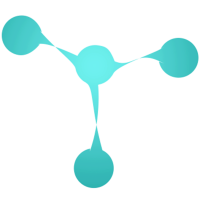
Facebook offers FBLearner, a powerful machine-learning framework that allows you to create AI apps using machine learning. It supports many algorithms and can also be extended with custom workflows. FBLearner is great because any engineer can create a new workflow, and integrate it with Facebook’s infrastructure.
PyRobot
Facebook recently released PyRobot a free open-source robotics platform. This framework was developed in collaboration between Carnegie Mellon University and Facebook. It is designed to make machine programming easy for researchers and non-robotics people alike. PyRobot makes it possible for AI researchers without any programming knowledge to build and operate robots quickly.
Although humans can learn to move an limb and arm, computers must be taught how the joints work on a robot arm. Computers must also be able to calculate precise angles and torques to control the robotic arm. Facebook has taken a rare step into the robotics world with the launch its PyRobot framework.
Caffe2
Caffe2 uses GPUs for deep learning tasks. It's designed to run on next-generation mobile processors such as Qualcomm Inc's Snapdragon and Adreno graphics processing unit. The Facebook team considers the developer community when designing this framework and they have put together a series of tutorials and documentation that can be helpful for beginners.

Caffe2 Framework is open-source. It can be used in creating and training deep learning models on mobile devices. It uses the ResNet-50 neural network architecture as its 64-GPU GPU GPU architecture. It was built by Facebook engineers using data-parallel models. Facebook uses 64 GPUs and eight NVIDIA TeslaP100 GPU accelerators to train its models.
Prophet
Facebook developed the Prophet of Facebook machine learning framework. Its primary goal is to predict business-related time series. The algorithm is very simple to use, and requires only a few lines. It requires very little feature development, which can be a plus for business forecasting. Prophet is not perfect and has its flaws. If multiple events interrupt a signal it can make fine-tuning difficult.
Data with cyclical behavior is necessary for the Prophet's effectiveness. This means it cannot be used to measure external events. It also requires historical data for three years.
Detectron
Facebook has developed Detectron, a machine learning framework. The framework is open source and has been used by Facebook teams in training custom models for various uses like augmented reality or community integrity. The Facebook AI research team hopes its open-source platform will encourage more research in AI labs all over the globe. It includes performance baselines for 70 pretrained models.
The framework is written in Python. It uses the Caffe2 deeplearning framework. It is pre-trained with more than 70 models and can be deployed to cloud and mobile environments.

Keras
The Keras machine learning framework is a powerful tool that helps you to create and deploy machine learning applications. It supports almost all neural network models. Its flexible syntax and modular design make it ideal to conduct innovative research. Keras supports two types of models. They are functional and sequential.
Keras Front End is easy to use, allowing you to rapidly prototype neural networks models for research. Keras API makes it easy to export models into other frameworks. Unlike other machine learning frameworks, Keras is self-contained and does not rely on back end frameworks. It can be easily extended using Python.
FAQ
Why is AI important
According to estimates, the number of connected devices will reach trillions within 30 years. These devices will include everything from cars to fridges. The Internet of Things is made up of billions of connected devices and the internet. IoT devices will communicate with each other and share information. They will also make decisions for themselves. A fridge may decide to order more milk depending on past consumption patterns.
It is estimated that 50 billion IoT devices will exist by 2025. This is a tremendous opportunity for businesses. But it raises many questions about privacy and security.
Is there any other technology that can compete with AI?
Yes, but not yet. Many technologies have been developed to solve specific problems. However, none of them can match the speed or accuracy of AI.
How does AI function?
Understanding the basics of computing is essential to understand how AI works.
Computers save information in memory. Computers use code to process information. The computer's next step is determined by the code.
An algorithm is an instruction set that tells the computer what to do in order to complete a task. These algorithms are often written using code.
An algorithm can be thought of as a recipe. A recipe may contain steps and ingredients. Each step is a different instruction. For example, one instruction might say "add water to the pot" while another says "heat the pot until boiling."
What does AI look like today?
Artificial intelligence (AI) is an umbrella term for machine learning, natural language processing, robotics, autonomous agents, neural networks, expert systems, etc. It's also known by the term smart machines.
Alan Turing, in 1950, wrote the first computer programming programs. His interest was in computers' ability to think. He suggested an artificial intelligence test in "Computing Machinery and Intelligence," his paper. This test examines whether a computer can converse with a person using a computer program.
John McCarthy introduced artificial intelligence in 1956 and created the term "artificial Intelligence" through his article "Artificial Intelligence".
We have many AI-based technology options today. Some are easy to use and others more complicated. They include voice recognition software, self-driving vehicles, and even speech recognition software.
There are two main types of AI: rule-based AI and statistical AI. Rule-based uses logic for making decisions. A bank account balance could be calculated by rules such as: If the amount is $10 or greater, withdraw $5 and if it is less, deposit $1. Statistic uses statistics to make decision. A weather forecast might use historical data to predict the future.
Statistics
- Additionally, keeping in mind the current crisis, the AI is designed in a manner where it reduces the carbon footprint by 20-40%. (analyticsinsight.net)
- A 2021 Pew Research survey revealed that 37 percent of respondents who are more concerned than excited about AI had concerns including job loss, privacy, and AI's potential to “surpass human skills.” (builtin.com)
- More than 70 percent of users claim they book trips on their phones, review travel tips, and research local landmarks and restaurants. (builtin.com)
- According to the company's website, more than 800 financial firms use AlphaSense, including some Fortune 500 corporations. (builtin.com)
- In 2019, AI adoption among large companies increased by 47% compared to 2018, according to the latest Artificial IntelligenceIndex report. (marsner.com)
External Links
How To
How to set Cortana for daily briefing
Cortana is Windows 10's digital assistant. It is designed to assist users in finding answers quickly, keeping them informed, and getting things done across their devices.
A daily briefing can be set up to help you make your life easier and provide useful information at all times. This information could include news, weather reports, stock prices and traffic reports. You can choose the information you wish and how often.
Win + I is the key to Cortana. Select "Cortana" and press Win + I. Select Daily briefings under "Settings", then scroll down until it appears as an option to enable/disable the daily briefing feature.
If you have the daily briefing feature enabled, here's how it can be customized:
1. Open Cortana.
2. Scroll down to "My Day" section.
3. Click the arrow to the right of "Customize My Day".
4. Choose the type information you wish to receive each morning.
5. You can change the frequency of updates.
6. Add or subtract items from your wish list.
7. Save the changes.
8. Close the app.